7 states.. 7 distinct Holis! See how these seven chief Indian states reach out with unique colors of joy!
Total Views |
-Anjali Ankad
A true and caring relation doesn't have to speak loud, a soft message is just enough to express the heartiest feelings. Holi is a time to reach out with the colors of joy. It is the time to love and forgive. Enjoy the festival of Holi with lot of fun.
The most colorful and vibrant festival of India, Holi, is marked with much fun and fervor throughout the country and other parts of the world. Celebrating the triumph of good over bad, this colorful festival falls on Phalgun Purnima, which falls at the end of February or in early March, as per the Georgian calendar. Being the festival of colors, and these colors again being 'different', there are unalike ways in which each state in India celebrates Holi. Have a look at the immense enthusiasm and distinct Holi traditions in India.
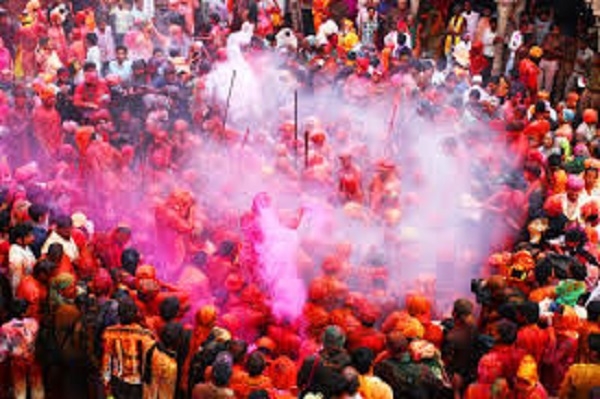
Uttarakhand
This vibrant festival is covered for a period of two months in Kumaon. The sowing season grows and makes its place in Uttarakhand which is why the festival is essential for the people residing here especially the ones related to the agriculture sector. Music is the heart of the festival in which the locals are very specific about the ragas where Bhimpalasi, Peelu, and Sarang are chanted post-dawn while in the evening they revel in Shyam Kalyan, Yaman and Kalyan ragas. There are different forms of Holi like Mahila Holi, Baithaki Holi, and Khadi Holi. The food that is prepared on this occasion includes Gujia, fried potatoes namely Aloo Gutuk served with jamboo, a Himalayan spice.
Uttar Pradesh
There is a very unique approach to Holi in some regions of UP. The women on the day of Holi gather in big numbers with lathis to run after men and hit them in a playful way. On the other hand, the men are prepared with dhal or shield. Such kind of celebration happens in parts like Nandgaon, Barsana, Vrindavan, and Mathura which is an age-old tradition finding its roots in Hindu Mythology. They believe that Lord Krishna went to Radha’s village to play Holi to which the women responded by hitting him with lathis and eventually made him disappear from the village. This festival goes on for a week in which the last day is commemorated with a grand fair called Ganga Mela or the Holi Mela.
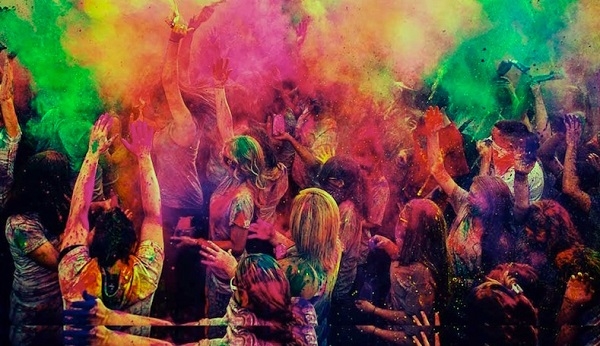
Maharashtra
In Maharashtra, it is celebrated differently. The festival is celebrated after the sunset by burning Holika which symbolizes the victory of good over evil. People here create some unusual sounds through their mouths and hands. The next day is called Dhuliwandhan where they play with ashes left after burning the Holi. The celebration of Holi in Maharashtra is incomplete without their delicacy, 'Puranpolis'. Rangpanchami is the day people play with colors in Maharashtra, and it comes after five days from Phalgun Poornima.
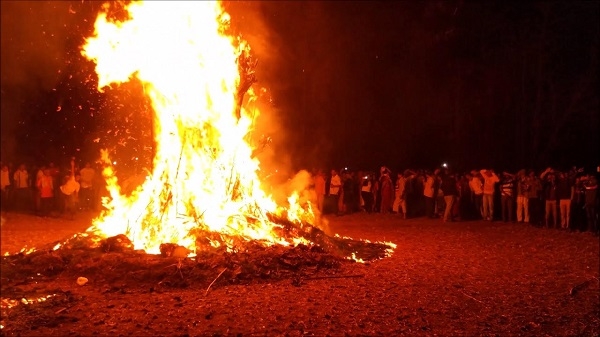
West Bengal
In Bengal, Holi is known by many names such as Dol Purnima, Dol Jatra, and Swing Festival. On the Dol Purnima, the devotees take turns to swing while women dance around the swing and sing devotional songs. The Dol Jatra is celebrated the next day where a procession of idols of Lord Krishna and Radha is taken out in the palanquins on the main streets accompanied by music, frolic and smearing colors on each other’s faces.
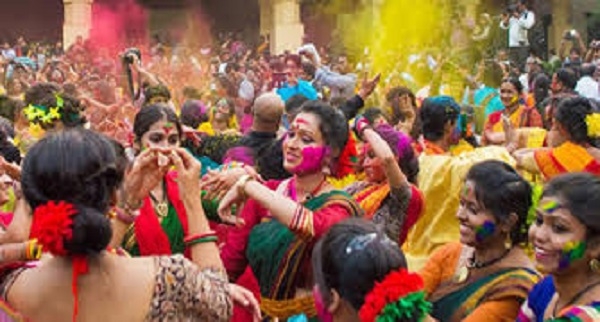
Gujarat
Though Holi celebrated, in the same way, there is the most famous tradition in Gujarat which is the breaking of the earthen pot full of buttermilk. This ritual comes from the tales where Lord Krishna used to tease and break pots of the milkmaids. A pot full of buttermilk is tied high on a rope. To get to the heights, people form a human pyramid. While the young boys form the pyramid, people throw colored water on them. Dhuleti, which is celebrated on the next day, involves fasting, feasting and throwing of color and water on each other. There is also a ritual wherein some regions of Gujarat where the married women beat their brother-in-law with their sari rolled up into a rope in a mock rage as they try to drench them with colors and in turn, they bring sweets to her in the evening.
Bhil Tribes in northwest India
Now, this is interesting! The Bhils in Rajasthan and Madhya Pradesh have their own special way to mark the festival. They light a bonfire on the eve and worship the goddess. Villagers bring kesudo and mango spring flowers and grains signifying new life. When the fire is lit, loud cries of Holimata rend the air. Young people in the tribes have their own reason to look forward to the festival as they are allowed to form close communication leading into marriages on Holi.
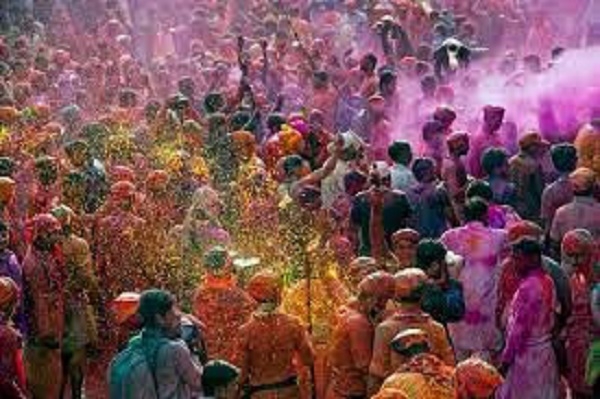
Kerala
Holi is known by the name Manjul Kuli in Kerala, which is celebrated in Gosripuram Thiruma’s Konkani Temple. The Kudumbi community celebrates the festival in a span of four days at around 20 temples. In some of the temples of Kudumbi, an areca nut tree is cut and is transported to the shrine, which indicates the victory of Goddess Durga over the demons while in some other temples a crocodile is created using mud, which is believed to symbolize the Goddess who helped the community while the community migrating to Kerala from Goa. On the succeeding day of the celebration, the entire Kudumbi community, play with colors by hurling at each other water mixed with turmeric and dance and sing.

